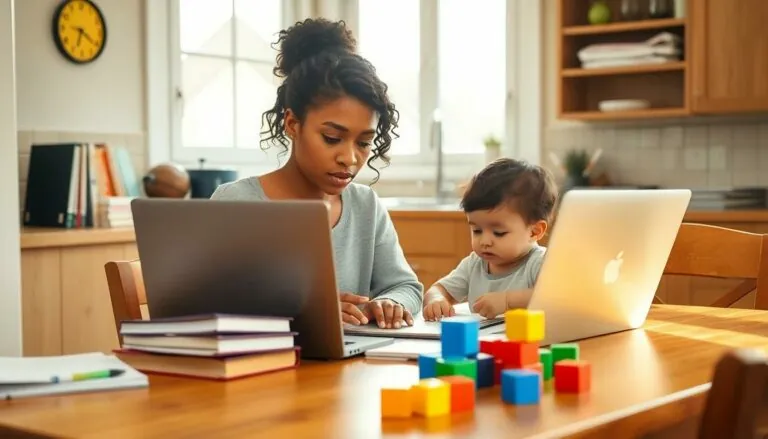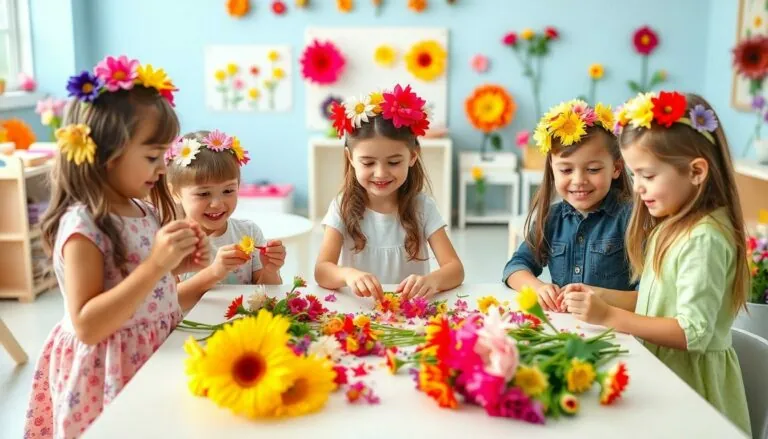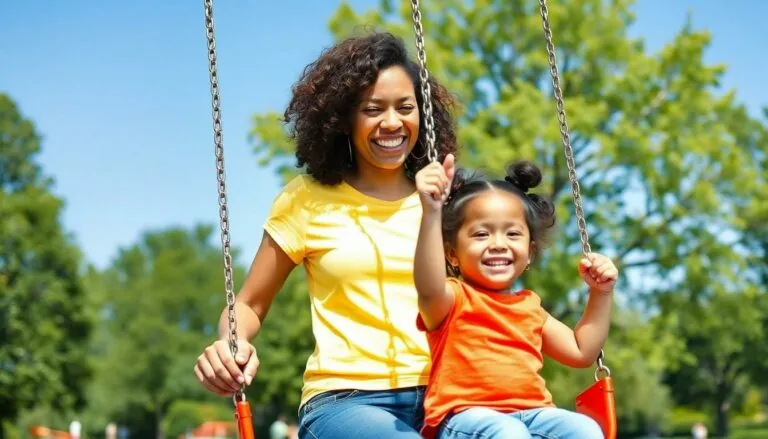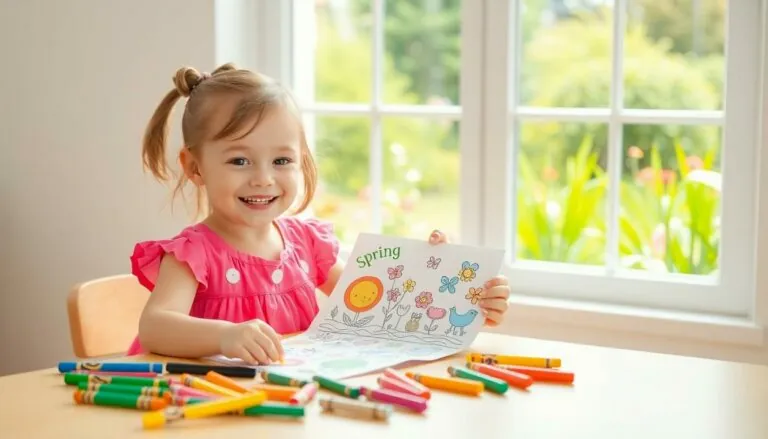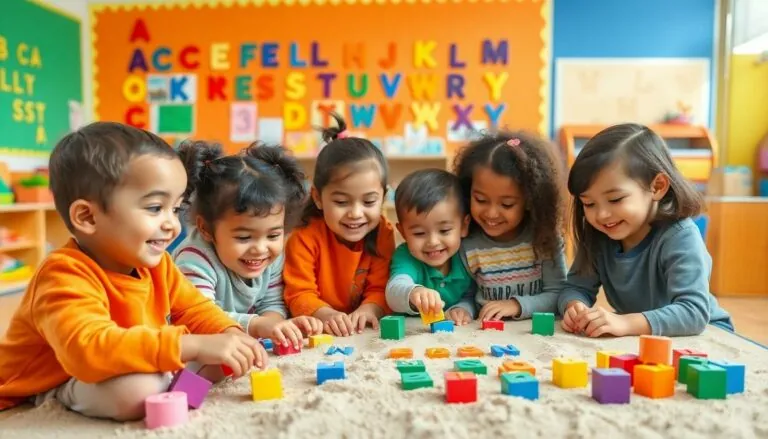Table of Contents
ToggleWinter’s here, and with it comes the perfect opportunity to unleash creativity in preschoolers! While snowflakes may be falling outside, little hands can be busy crafting their own winter wonderlands. Forget the usual screen time; it’s time to get those tiny fingers sticky with glue and paint.
Benefits of Winter Crafts for Preschoolers
Winter crafts offer opportunities for preschoolers to explore creativity while having fun. These activities promote hands-on learning that provides lasting benefits.
Enhancing Creativity
Engagement with winter crafts encourages imaginative thinking in preschoolers. Creativity flourishes when children create winter-themed projects, such as paper snowflakes or painted pinecones. Children learn to express their ideas visually, exploring colors and textures in the process. These experiences instill confidence, allowing young ones to take risks in their creations. Through crafting, they develop their unique artistic voices and appreciate diverse perspectives.
Developing Fine Motor Skills
Winter crafts contribute significantly to fine motor skill development. Activities like cutting, gluing, and painting strengthen hand-eye coordination and grip. Manipulating small materials enhances dexterity, essential for tasks such as writing and buttoning clothes. Repeated practice with tools, like brushes and scissors, builds muscle memory and precision. As preschoolers tackle these crafts, they improve their physical control, setting a foundation for future learning experiences.
Popular Winter Crafts Ideas
Engaging preschoolers in winter crafts sparks creativity and offers hands-on experiences. Here are two popular craft ideas to inspire children during the cold months.
Snowflakes
Creating paper snowflakes provides a fun way for preschoolers to explore symmetry and design. Children can fold paper into triangles and use scissors to cut shapes along the edges. After unfolding, they’ll reveal unique snowflake patterns. These activities enhance fine motor skills while encouraging imaginative play. Using glitter or markers allows for decorating the snowflakes, adding a personal touch. Displaying snowflakes on windows or walls brings a festive atmosphere to any room.
Winter Animal Puppets
Winter animal puppets capture the creativity of young crafters while developing storytelling skills. Kids can make simple puppets using paper bags or felt. Selecting animals like snowmen, penguins, or polar bears serves as great inspiration for projects. Children can color, glue, and add features like googly eyes to bring their puppets to life. Puppet shows become a delightful way to encourage role-playing, enhancing verbal skills and creativity. This activity also provides an opportunity for group collaboration and social interaction among preschoolers.
Materials Needed for Winter Crafts
Gathering the right materials enhances winter craft activities for preschoolers. Engaging children in creative projects requires various supplies.
Basic Craft Supplies
Paper forms the foundation for countless projects. Construction paper suits many crafts because of its vibrant colors. Scissors support cutting shapes, while glue keeps everything together. Markers and crayons provide options for adding detail and color. Glitter can add sparkle to winter creations, making them more festive. Stickers bring an element of fun, allowing children to personalize their crafts. Those supplies essential for winter crafts promote exploration and creativity.
Eco-Friendly Options
Using recycled materials reflects a commitment to sustainability. Cardboard boxes serve as excellent bases for building crafts. Egg cartons become winter animals, sparking imaginative play. Old newspapers can transform into snowflakes through simple folding techniques. Natural elements like pinecones and twigs provide unique textures in projects. Non-toxic paint ensures children’s safety while they create. Embracing eco-friendly supplies teaches preschoolers the importance of caring for the environment. These options encourage creativity while fostering respect for nature.
Tips for Successful Craft Sessions
Craft sessions thrive with the right approach. Create an engaging environment to inspire creativity and focus.
Setting Up a Craft Space
A dedicated craft space enhances the crafting experience. Organize materials like scissors, glue, and paper within easy reach. Ensure tables are covered with protective cloths to minimize mess. Children gain confidence when they can explore materials freely. Arrange a variety of supplies, such as stickers and markers, to spark ideas. Natural light improves concentration, so select a bright room if possible. Safe, accessible storage for completed projects showcases their work. Establishing an inviting space sets the stage for productive crafting.
Involving Parents and Caregivers
Involving parents and caregivers elevates the crafting experience. They guide children through projects while strengthening bonds. Encourage parents to participate in brainstorming sessions. Collaborative crafting moments build teamwork and communication. Offer age-appropriate projects, ensuring everyone stays engaged. Share instructions beforehand, so caregivers feel prepared and confident. Highlighting the joy of creating together deepens relationships while enhancing learning. Crafting becomes a memorable experience when support is present.
Conclusion
Winter crafts offer preschoolers a wonderful opportunity to express their creativity while developing essential skills. Engaging in hands-on activities not only keeps children entertained but also fosters their imagination and fine motor abilities. By incorporating simple materials and eco-friendly options, caregivers can create a nurturing environment that encourages exploration and learning.
These winter-themed projects serve as memorable experiences that strengthen bonds between children and their caregivers. As preschoolers dive into crafting, they build confidence and lay the groundwork for future creative endeavors. Embracing the spirit of winter through crafts makes this season a magical time for creativity and connection.



